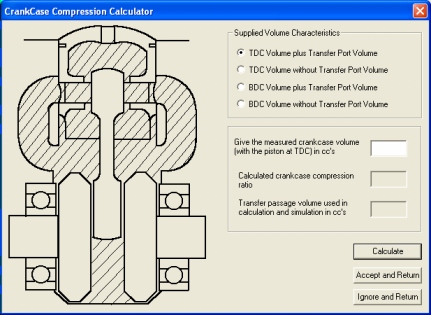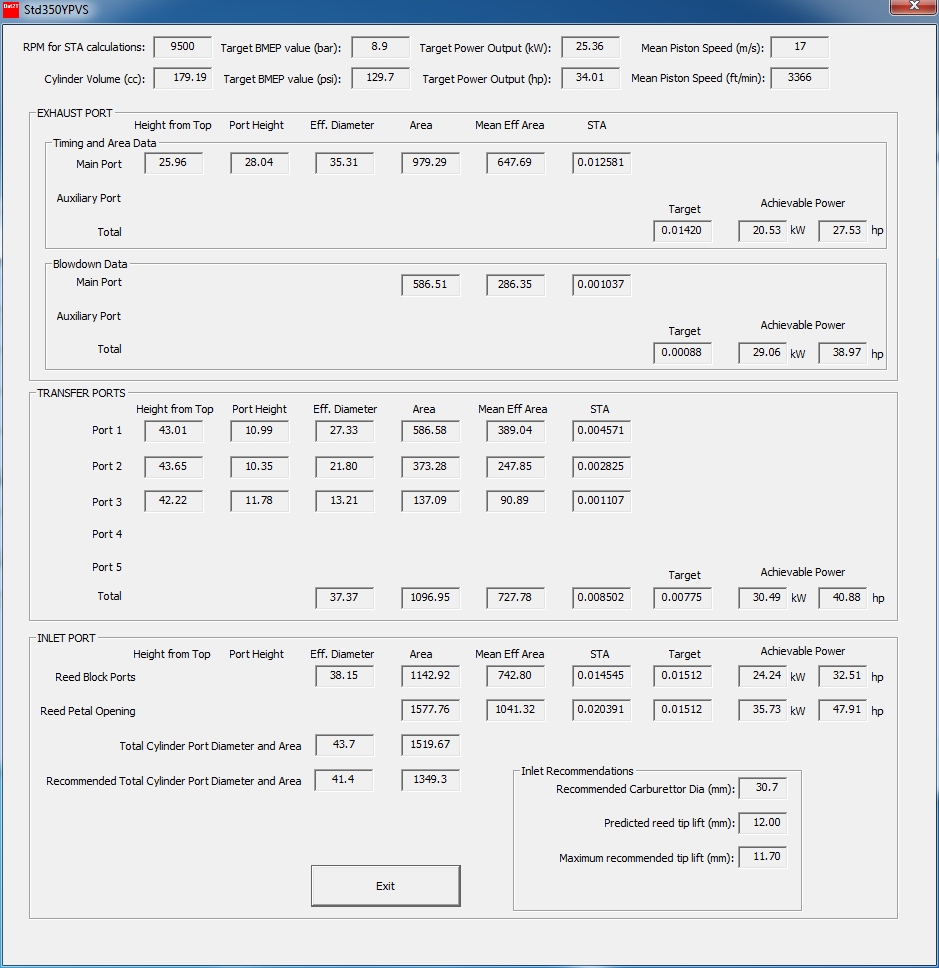|
EngMod2T Detailed Description |

|
Engine Layouts
The current version of the software can simulate engines ranging from 1 to 8 cylinders with the following layouts:
Two versions of scavenging / inlet systems are available:
It has built in calculators for basic head shapes, crankcase compression ratio and target BMEP |
|
|
Types of Inlet Systems
The following is a brief summary of the available inlet systems:
|
|
|
Types of Inlet
Ports
EngMod2T is one of the very few programs that model cylinder reed valves correctly with a combination of cylinder ports, Boyesen ports and floor ports.
|
|
|
Scavenging Model
The scavenging model is based on the Blair model with some refinements. It is based on measurements in a special type of test apparatus. Transfer Ports The software can model from 2 to 12 ports |
|
|
Combustion Modeling
Two types of combustion modeling is available and both are based on the typical two-zone model (a burnt and an unburnt zone):
|
|
|
Exhaust Ports
The exhaust ports fall into four main classes:
The first two types also has the option of having a powervalve. The powervalve can be of the governor type (mechanical or servo motor) or of the pneumatic type. It can be in the main port only or also in the auxiliary ports. |
|
|
Exhaust Systems
The available exhaust systems fall into three main classes:
Each class can be further divided into the following types:
There is also a utility that can generate a tuned pipe based on one of the following 3 models:
|
|
|
Supercharger Modeling The current release allows for the modeling of a single supercharger with or without Charge air cooler (intercooler). Software is included to digitize the compressor characteristics. It can be either a centrifugal compressor or twin rotor type compressor (eg Roots).
Turbocharger Modeling The current release allows for the modeling of a single turbocharger with or without Charge air cooler (intercooler) and wastegate. Software is included to digitize the compressor and turbine characteristics. The exhaust system can be modelled as straight pipes or tuned pipes. The figure shows three of the tuned pipe options available for an I4 engine. |
As part of the pre-processor, Dat2T, there is a utility to verify the design:

To use a compressor map as part of the simulation it has to be extrapolated into the surge region and to the negative (reverse) flow region. The following is an example of such a digitized and extrapolated map:

To use a turbine map as part of the simulation it has to be digitized. As it is very difficult to obtain a full turbine map, the software currently uses an approximation known as the "swallowing curve". The following is an example of such a digitized swallowing curve:

Copyright © Vannik Developments. All rights reserved.